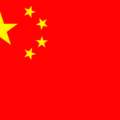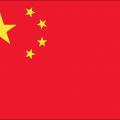G-7’s Build Back Better Initiative to Counter China’s Belt & Road Initiative?

In its recently concluded summit, the G-7 leadership has decided to launch a global infrastructure initiative to build a back a better world that is b3w. This will help the developing economies and the focus will be on climate, health, technology, and gender equality and equity.
B3W is seemingly being put in place to meet the infrastructure challenges in low and middle-income countries. The b3w might be seen as a way to counter China’s road and belt initiative.
For a long time, there’s been criticism about the inability of the West to come to terms with China’s growing role around the world. Especially the way China has redefined the rules of the game when it comes to infrastructure financing and connectivity initiatives. This is via its principle be a belt and road initiative. That is something that the world has been looking for very seriously over the last few years. There have been multiple debates about what it stands for, how it goes about working and how China has operationalized it etc. There has also been a watch on how China is engaging in particular with lower and middle-income countries.
What China did for the problems that the initiative has created is to tap into a narrative that’s been going around for a while. The narrative is to do with globalization preceding a pace. The way globalization was moving ahead was that it was keeping some countries outside the frame of reference of globalization. Therefore, the next stage of globalization demanded that infrastructure and connectivity be at the heart of it. By pouring in money and resources, by giving it a geopolitical left China actually mobilized world opinion in its favor.
What is now being looked at is the challenges that have come up with China’s way of working around these initiatives. What has happened is that a lot of the countries have actually been at the receiving end of it. It started off with great promise, clearly, a vacuum that China wanted to fill, and other countries welcomed it. However, in operational terms what it meant was that China started using it to expand its own geopolitical influence. Rather than it becoming an instrument of helping lower and middle-income countries, it became an instrument of subverting their rights in some ways.
That is where now G-7’s focus is drawn because individual countries from the West have been talking about it and their own initiatives. Even the Indo-Pacific has its own initiatives in terms of dealing with this problem. Now the world’s seven most advanced industrial countries are trying to fill up this gap. They shall provide an alternative to lower and middle-income countries when it comes to quality financing of infrastructure and transparent financing of infrastructure. These are some of the ways they can distinguish their efforts compared to what China is doing. This is what the b3w initiative will be about if it comes to be operationalized.
















